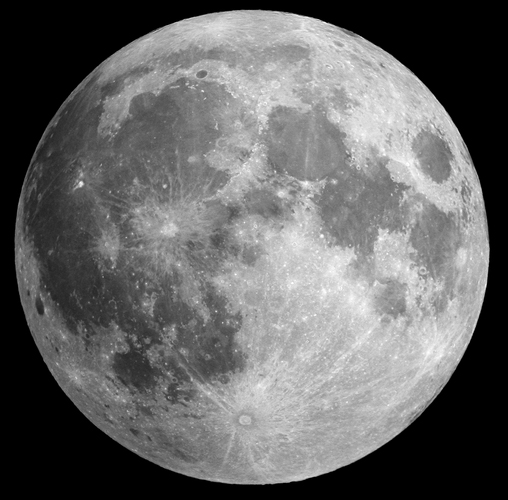
The ultimate goal? Getting humans living and working on the moon, and then using it as a way station for possible later missions into deep space. More than a dozen robotic vehicles are scheduled to land on the moon in the 2020s.
On July 14, India launched its Chandrayaan-3 mission, a second attempt from the country to land on the surface of the moon after Chandrayaan-2 crashed there in 2019.
Hot on its heels are two private companies in the US, Astrobotic and Intuitive Machines, both partly funded by NASA to begin moon landings this year.
Astrobotic’s Peregrine One lander is scheduled to carry a suite of instruments to the moon’s northern hemisphere later this year to study the surface, including a sensor to hunt for water ice and a small rover to explore.
“Our primary objective is to land softly on the south pole region of the moon, which has never been done before,” said Steve Altemus, the company’s CEO, after NASA recently asked the company to change the original planned landing site.
The mission will include a telescope to image the Milky Way’s center from the moon, another first, and some demonstration lunar data centers.
In 2024, Astrobotic hopes to send a NASA rover called VIPER to drive into some of the moon’s permanently shadowed craters and hunt for water ice.
The craters, he adds, are thought to be “The most likely places of finding ice on the moon.”
These private companies are backed by millions of dollars in government money, driven by NASA’s desire to return humans to the moon as part of its Artemis program.
NASA wants to expand commercial moon activity in the same way it has helped fund commercial activity in Earth orbit with companies such as SpaceX. “The goal is we return to the moon, open up a lunar economy, and continue exploring to Mars,” says Nujoud Merancy, chief of NASA’s Exploration Mission Planning Office at the Johnson Space Center in Texa.
The ultimate plan, Merancy says, is to foster a “Permanent settlement on the moon.”
In November 2024, if all goes to plan, the Artemis II mission will send a crew of four astronauts-three American and one Canadian-around the moon on a 10-day mission in NASA’s Orion spacecraft, launched by the agency’s mighty new Space Launch System rocket.
Humans have not traveled to the moon since Apollo 17 in 1972.
Also in November 2024, a SpaceX Falcon Heavy rocket is scheduled to carry the first modules of NASA’s new space station near the moon, called the Lunar Gateway.
Gateway is meant to support Artemis missions to the moon, although the exact relationship is still somewhat murky.
The first humans back on the moon are due to land in 2025, aboard a SpaceX Starship vehicle as part of Artemis III. Much work remains to be done not least proving Starship can launch from Earth and be refueled in space.
NASA has contracted both SpaceX and more recently Jeff Bezos’s competing Blue Origin for its planned landings at the moon’s south pole to prospect for water ice, which can be used both as drinking water and maybe as rocket fuel so that the moon could become a staging point for missions to more distant destinations in the solar system, such as Mars.
The goal “Isn’t just Mars,” says Teasel Muir-Harmony, a curator at the National Air and Space Museum in Washington, DC. “It’s learning how to live and work in deep space and creating a sustained presence further than Earth orbit.”
The moon, private space travel, and the wider solar system will all have major missions over the next 12 months.
“We are getting into areas like private space platforms and lunar mining facilities, for which there really is no clear government precedent,” says Scott Pace, a space policy expert at George Washington University and former executive secretary of the National Space Council in the US. “We have to be responsible for activities in space.”
Chris Johnson, space law advisor for the Secure World Foundation in the US, expects to see discussions at the United Nations over the next five or so years to iron out some of the issues.
“We’re going to need norms for radio quiet zones, lunar roadways between valleys and craters, and landing pads on the moon,” he says.
Or perhaps if emergencies break out with astronauts from different countries on the moon, “Everyone has to take shelter at the nearest shelter, whether it’s yours or another’s,” he says.
